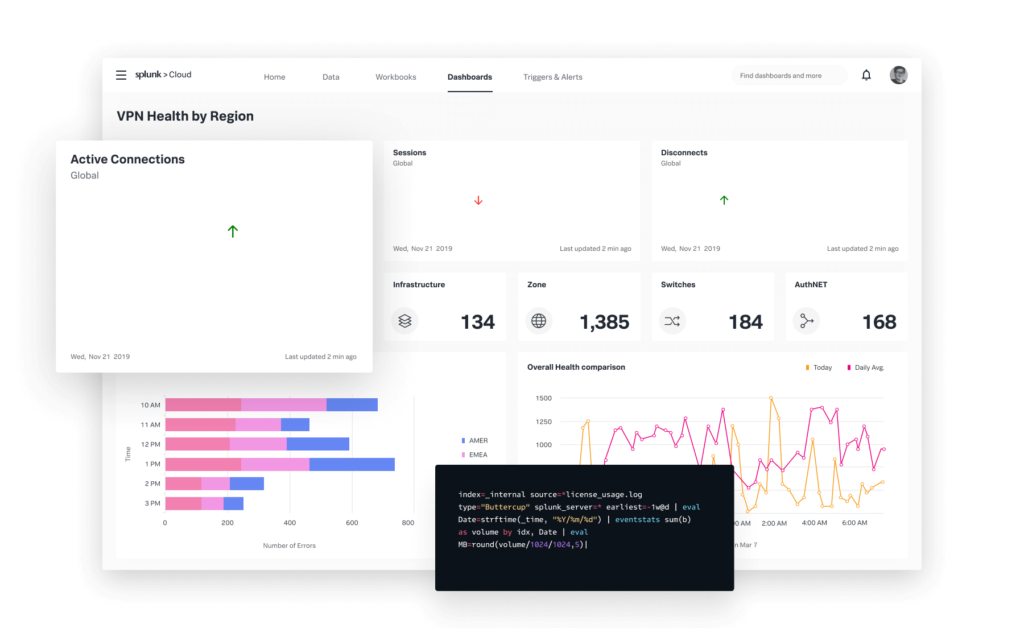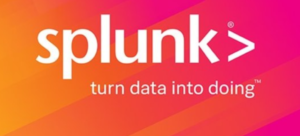Connections

Splunk: Connecting Every Data Source Dot
Story Highlights
San Francisco-based Splunk has a simple mantra for a complex problem: “Turn data into doing” using its Data-to-Everything Platform, with technology designed to investigate, monitor, and analyze and act on data at any scale, from any and every source.
Matt Olson, Global Strategist for Communications and Media for Splunk, spoke with MESA about the company’s unique take on data, how the pandemic has shifted the data needs of its clients, and what’s next for Splunk.
MESA: How did Splunk first come on the scene, what was the impetus for the company?
 Olson: Splunk was initially founded as a log aggregation and exploration tool to support investigation, delving into logs to sleuth out issues and their causes. Sort of a “grep on steroids” to spelunk logs (hence the name “Splunk.”
Olson: Splunk was initially founded as a log aggregation and exploration tool to support investigation, delving into logs to sleuth out issues and their causes. Sort of a “grep on steroids” to spelunk logs (hence the name “Splunk.”
MESA: Security, IT, cloud, enterprise … Splunk’s offerings run the gamut, with data being a central theme. Where does Splunk stand out in what media and entertainment companies can take advantage of?
Olson: Splunk’s special sauce is the ability to connect the dots across all different data sources and types to provide integrated end-to-end visibility across highly complex service paths. Splunk provides a holistic view into what’s happening with services, networks and applications including the ability to drill down to get at root cause and drive remediation for security and service issues.
MESA: Where does Splunk fit into the security equation for clients, how does Splunk help M&E companies gain crucial insights into potential security concerns around their data?
Olson: Splunk provides integrated visibility for complex services service stacks and offerings for immediate detection and action. As a one stop shop Splunk, helps our customers to respond to emerging security issues with real time visibility and monitoring across widely distributed infrastructures.
MESA: What are the biggest data shifts Splunk has observed during the pandemic, and how has the company adapted to its clients’ needs during this time?
 Olson: The pandemic is really driving a massive shift in the way media services are being consumed and provided including the shift to remote work and a distributed staff and infrastructure to support these services.
Olson: The pandemic is really driving a massive shift in the way media services are being consumed and provided including the shift to remote work and a distributed staff and infrastructure to support these services.
At the same time, fraud and security breaches are on the rise as bad actors try to take advantage of these shifts. So Splunk, with our adaptable extensible platform, empowers our customers to get a step ahead of these challenges in identifying shifting patterns not only in valid usage shifts but also the adapting behavior of the bad actors.
Splunk also started designing dashboards and tools to help support our company’s rapid shift to total remote work when COVID hit. And pretty much immediately we decided to make this available to customers as well. This program is Splunk’s Remote Work Insights (RWI).
RWI helps identify gaps in security posture by monitoring for vulnerabilities and delivering real-time visibility across an organization’s full environment, including when the endpoints are individual employee laptops connecting via VPN or using remote collaboration tools.
MESA: What are some of Splunk’s favorite use case stories in the media and entertainment space, and why?
Olson: Really our favorite use case stories are around the ability to establish real time integrated monitoring for complex streaming media platforms. With the advent of mobile consumption and the explosion of different modes of media consumption and on demand digital delivery along these complex service pads, it’s really introduced a very significant challenge for the industry.
Splunk has been able to really rise to the challenge of connecting the dots with these new complex service pads and doing it in real time to support media customers across the globe.
 MESA: What’s next for Splunk, what data-centric advances can we look forward to from you next?
MESA: What’s next for Splunk, what data-centric advances can we look forward to from you next?
Olson: Splunk is all in on the shift to the cloud and to micro services cloud enabled delivery infrastructures for observability and support of next generation microservices based delivery platforms. Our recent acquisitions will strengthen our portfolio with areas like synthetic traffic and Real User Monitoring (RUM) integration into our observability suite of services.
We’re really ahead of the curve here and will be continuing to make exciting new announcements in the near future.









